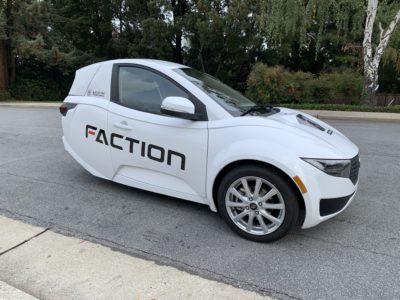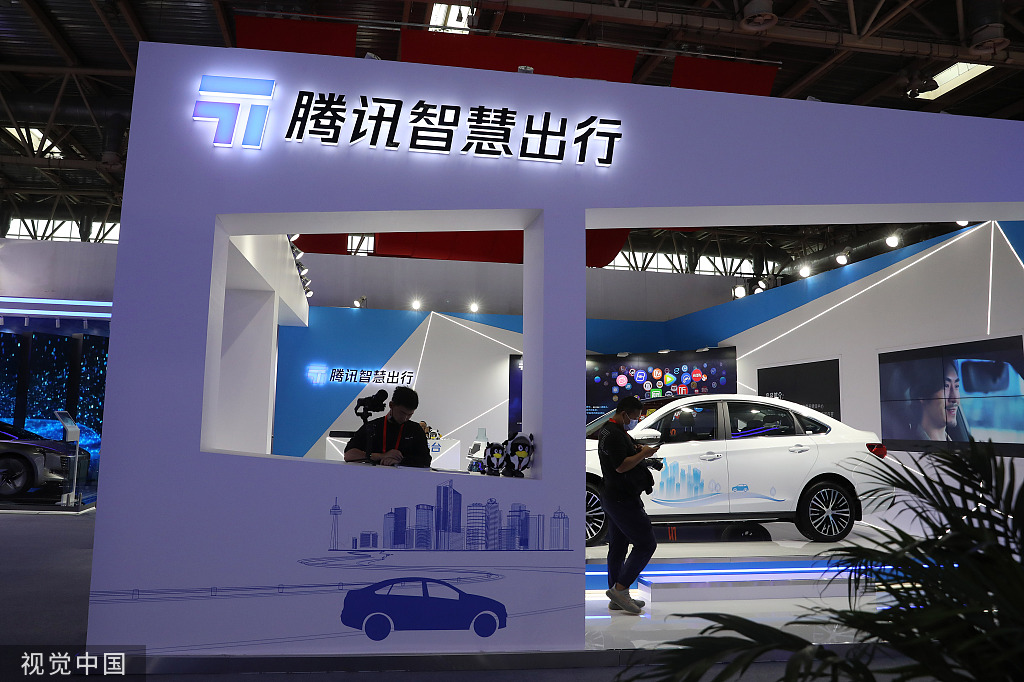More than a half dozen Cruise robotaxis stopped operating and sat in a street in San Francisco late Tuesday night, blocking traffic for a couple of hours until employees arrived and manually moved the autonomous vehicles. Photos and a description of the Cruise robotaxi blockade were shared to a Reddit post on a subreddit about… Continue reading Cruise robotaxis blocked traffic for hours on this San Francisco street
Tag: Mobility
What to look for when hiring a growth marketing agency
Jonathan Martinez Contributor Jonathan Martinez is a former YouTuber, UC Berkeley alum and growth marketing nerd who’s helped scale Uber, Postmates, Chime and various startups. More posts by this contributor How to improve retention, growth marketing’s golden metric When and how to hire your startup’s first growth marketer If you search for “growth marketing” roles… Continue reading What to look for when hiring a growth marketing agency
Three Wheeling: Startup Faction Develops Affordable Tri-Wheel AVs on NVIDIA DRIVE
Some things are easy as A, B, C. But when it comes to autonomous vehicles, the key may be in one, two, three. Faction, a Bay Area-based startup and NVIDIA Inception member, is preparing to debut its business-to-business autonomous delivery service, with three-wheel production electric vehicles purpose-built for driverless operation, streamlining time to market. In… Continue reading Three Wheeling: Startup Faction Develops Affordable Tri-Wheel AVs on NVIDIA DRIVE
Stellantis to decommission engine line in Trenton, cut workforce
Jeep maker Stellantis NV on Thursday said it will decommission an engine line at its Trenton Engine Complex by the end of the year in a move to consolidate production that will result in workforce reductions. The announcement comes with a $24.7 million investment into the complex’s south plant for retooling for a flexible engine… Continue reading Stellantis to decommission engine line in Trenton, cut workforce
Tencent Intelligent Mobility announces upgraded strategy
[Photo/VCG] Tencent unveiled on Friday its latest Vehicle-Cloud Integration strategy to improve mobility experience. The suite of new services announced by Tencent Intelligent Mobility included Tencent Intelligent Automobile Cloud, a one-stop cloud solution tailored for the intelligent auto industry, and Tencent Integrated Automobile Safety Solution, which covers all aspects of cloud management. “Tencent perseveres not… Continue reading Tencent Intelligent Mobility announces upgraded strategy
Scientists Say New James Webb Images Are So Powerful That It Was Emotional Just Looking at Them
“What I have seen moved me, as a scientist, as an engineer, and as a human being.” First Light While we await the ceremonial release of the first official images taken by NASA’s uber-expensive James Webb Space Telescope, early reactions to the long-awaited shots are already sounding pretty promising. “The images are being taken right… Continue reading Scientists Say New James Webb Images Are So Powerful That It Was Emotional Just Looking at Them
Michelin receives Top 100 Global Innovators 2022 recognition by Clarivate™
Michelin receives Top 100 Global Innovators 2022 recognition by Clarivate™ An award dedicated to the 6,000 members of the Michelin R&D community Using a novel selection methodand winners selected from 12 countries Receiving the Clarivate™ recognition today at its R&D forum, held at its technology center close to Clermont-Ferrand, France, Michelin celebrated this recognition with… Continue reading Michelin receives Top 100 Global Innovators 2022 recognition by Clarivate™
@BMW: The electric pioneer on the home stretch: Production of the BMW i3 comes to a close with an anniversary and the exclusive HomeRun Edition.002102
Leipzig. An era is coming to an end at the BMW Group plant in Leipzig. The serial production of the BMW i3 is now to come to an end, some eight and a half years after it was launched. A source of inspiration, a driver of innovation, a pioneer of locally emission-free driving pleasure: The list… Continue reading @BMW: The electric pioneer on the home stretch: Production of the BMW i3 comes to a close with an anniversary and the exclusive HomeRun Edition.002102
Mobility-as-a-Service Market Report 2022-2030: Cost-effectiveness and Convenience of MaaS and Concerns Over Greenhouse Gas Emissions Driving Growth
DUBLIN, June 30, 2022 /PRNewswire/ — The “Mobility-as-a-Service Market Report: By Service Type, Vehicle Type, Commuting Pattern, End Use, Payment Type, Propulsion Type – Global Industry Latest Trends and Demand Forecast to 2030” report has been added to ResearchAndMarkets.com’s offering. The global mobility-as-a-service market was valued at $128,489.2 million in 2021, which is expected to reach… Continue reading Mobility-as-a-Service Market Report 2022-2030: Cost-effectiveness and Convenience of MaaS and Concerns Over Greenhouse Gas Emissions Driving Growth
PayByPhone Announces Appointment of Jonny Combe as New Global CEO
Vancouver, Canada, June 30, 2022 (GLOBE NEWSWIRE) — Thirty-six-year-old Combe, already part of the senior leadership team, will work alongside current CEO Andy Gruber, who has been in the role for four years, during a transition period starting July 1, 2022. Gruber will exit the role effective August 1, 2022, to take up a senior… Continue reading PayByPhone Announces Appointment of Jonny Combe as New Global CEO


